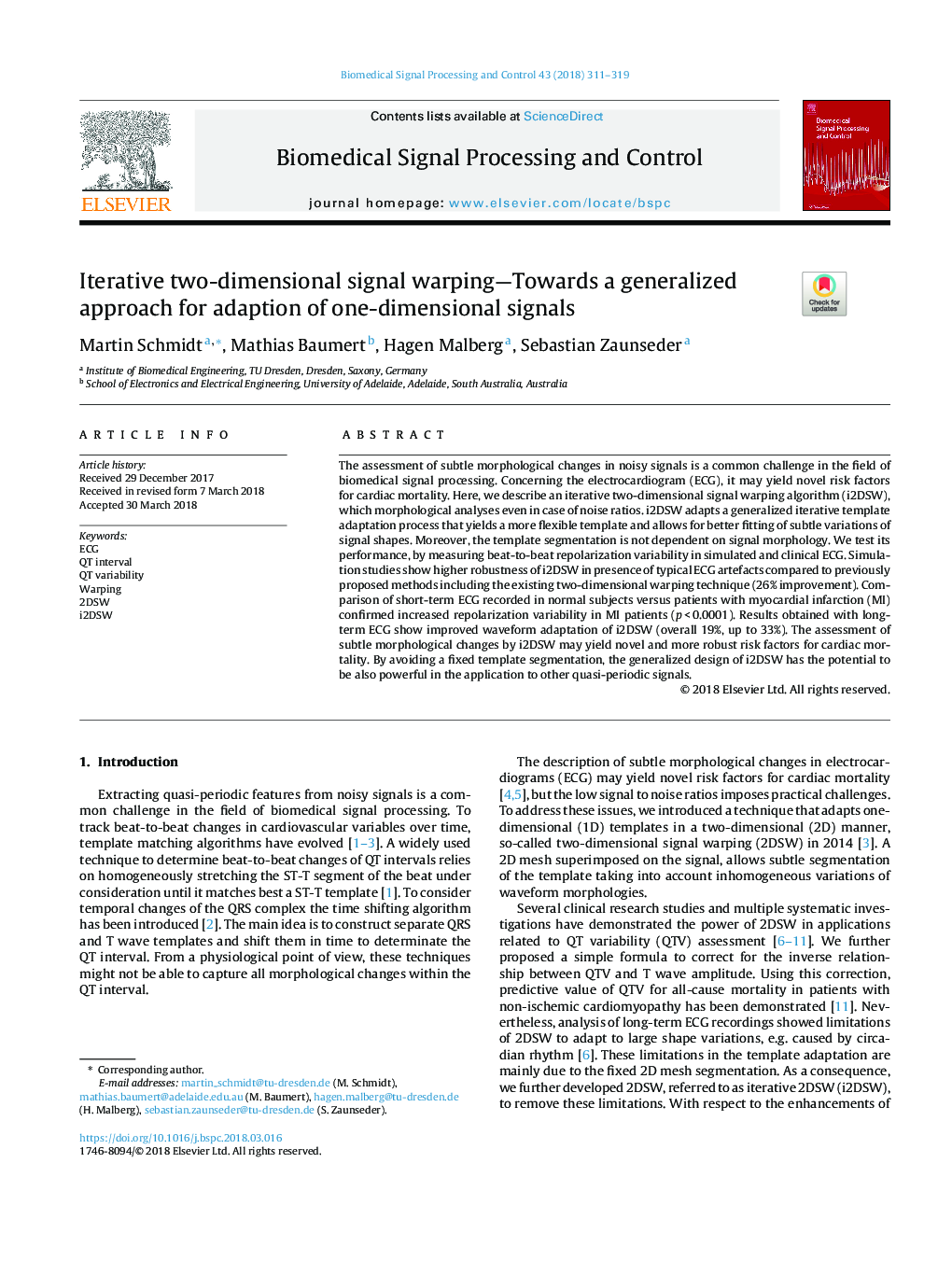| Article ID | Journal | Published Year | Pages | File Type |
|---|---|---|---|---|
| 6950868 | Biomedical Signal Processing and Control | 2018 | 9 Pages |
Abstract
The assessment of subtle morphological changes in noisy signals is a common challenge in the field of biomedical signal processing. Concerning the electrocardiogram (ECG), it may yield novel risk factors for cardiac mortality. Here, we describe an iterative two-dimensional signal warping algorithm (i2DSW), which morphological analyses even in case of noise ratios. i2DSW adapts a generalized iterative template adaptation process that yields a more flexible template and allows for better fitting of subtle variations of signal shapes. Moreover, the template segmentation is not dependent on signal morphology. We test its performance, by measuring beat-to-beat repolarization variability in simulated and clinical ECG. Simulation studies show higher robustness of i2DSW in presence of typical ECG artefacts compared to previously proposed methods including the existing two-dimensional warping technique (26% improvement). Comparison of short-term ECG recorded in normal subjects versus patients with myocardial infarction (MI) confirmed increased repolarization variability in MI patients (pâ¯<â¯0.0001). Results obtained with long-term ECG show improved waveform adaptation of i2DSW (overall 19%, up to 33%). The assessment of subtle morphological changes by i2DSW may yield novel and more robust risk factors for cardiac mortality. By avoiding a fixed template segmentation, the generalized design of i2DSW has the potential to be also powerful in the application to other quasi-periodic signals.
Keywords
Related Topics
Physical Sciences and Engineering
Computer Science
Signal Processing
Authors
Martin Schmidt, Mathias Baumert, Hagen Malberg, Sebastian Zaunseder,
